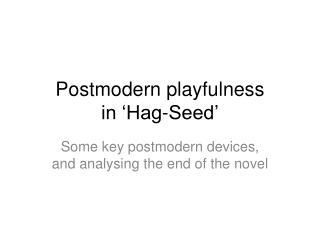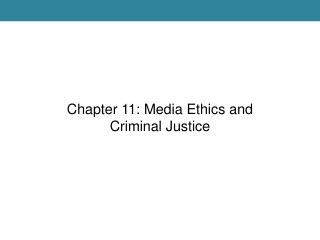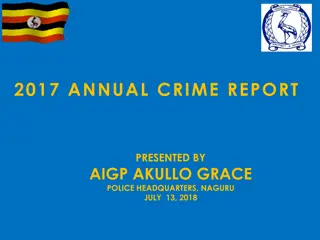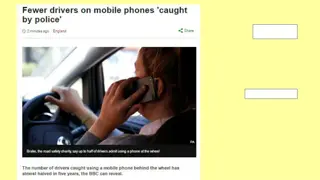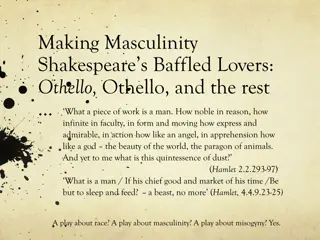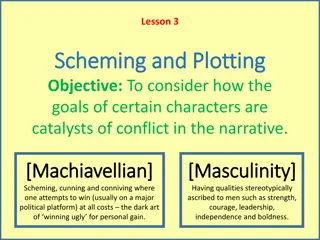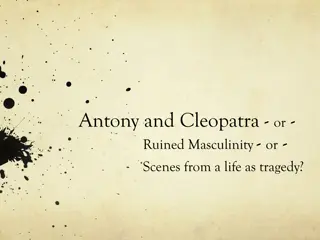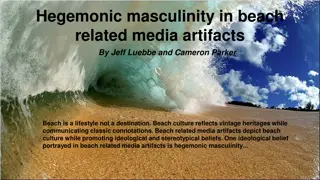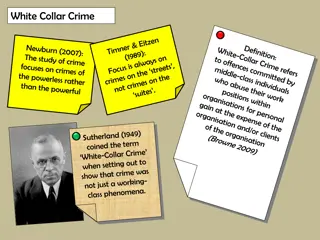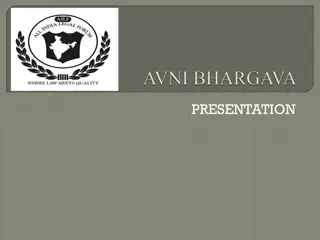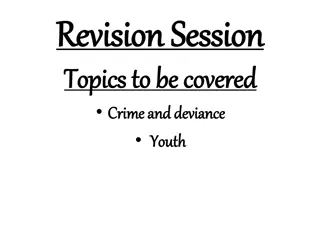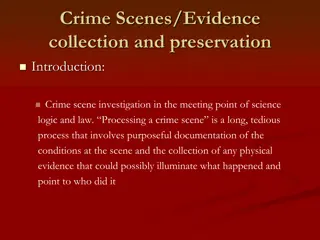Crime as a Postmodern Spectacle: Media Influence and Masculinity
In today's society, crime is often portrayed as a spectacle through media coverage, influencing how we perceive criminal activities. The role of media in presenting crime as a form of entertainment and sensationalism has become prominent, blurring the lines between reality and fiction. Additionally, the concept of masculinity is explored in connection to risky behaviors and the pursuit of thrill among young men. The growth of the night-time economy has provided opportunities for both legal and criminal activities, shaping the expression of masculinity in unconventional ways.
Download Presentation

Please find below an Image/Link to download the presentation.
The content on the website is provided AS IS for your information and personal use only. It may not be sold, licensed, or shared on other websites without obtaining consent from the author.If you encounter any issues during the download, it is possible that the publisher has removed the file from their server.
You are allowed to download the files provided on this website for personal or commercial use, subject to the condition that they are used lawfully. All files are the property of their respective owners.
The content on the website is provided AS IS for your information and personal use only. It may not be sold, licensed, or shared on other websites without obtaining consent from the author.
E N D
Presentation Transcript
Crime as a Postmodern Spectacle Crime and Deviance Chapter ?: Kidd-Hewitt and Osborne (1995) see media reporting of crime increasingly driven by the need for a 'spectacle'. Role of Media Spectacles are engaging because audiences become both repelled by the activities but fascinated at the same time. 2 Sun day, 09 Mar ch 202 5 Kooistra and Mahoney (1999) argue that media coverage of crime is increasingly a mixture of entertainment and sensationalism (what Neil Postman calls 'infotainment').
Postmodernist Theory on Media and Crime Postmodernists see the media as a crucial player in our perception of crime (regardless of whether this perception is accurate or not). Crime and Deviance Chapter ?: Role of Media 3 They highlight how the media present crime with a mixture of entertainment and sensationalism ('infotainment'). Sun day, 09 Mar ch 202 5 The ultimate expression of this is crime expressed as a spectacle.
Lyng (1990) - Edgework Young males seek pleasure like risk taking Their thrill is gained from acting in ways that are on the edge between security and danger (edgework) Eg) car theft and joy riding, gangs searching out violent confrontations Young men through such edgework are accomplishing masculinity proving they have control over their lives (Miller autonomy
The night-time economy Hobbs (2000) Last 15 years growth in leisure economy clubs/pubs etc Huge numbers of young people out in public in a narrow time band in the search for pleasure Taylor (1999) Development of nocturnal economy is linked to globalisation (as traditional economy declined and leisure economy grown in derelict urban settings)
EXPLANATION KEY ARGUMENT/POINTS/ THINKERS CRITIQUE Loss of traditional manual jobs in recent years. These helped working class men express masculinity Growth of night-time leisure economy that many men can gain legal employment from, criminal opportunities & express masculinity Postmodernist ideas about masculinity Winlow study of bouncers in Sunderland showed this (similar to Illegitimate Opportunity Structure) No real structure for men to pursue a career in crime Organised criminal subculture emerging in nightlife economy violence is a way to earn a living Reputation and employability depends on their body capital Body symbol of worth looking the part sign of masculinity..(the sign is all geek gets muscle and tats!)


